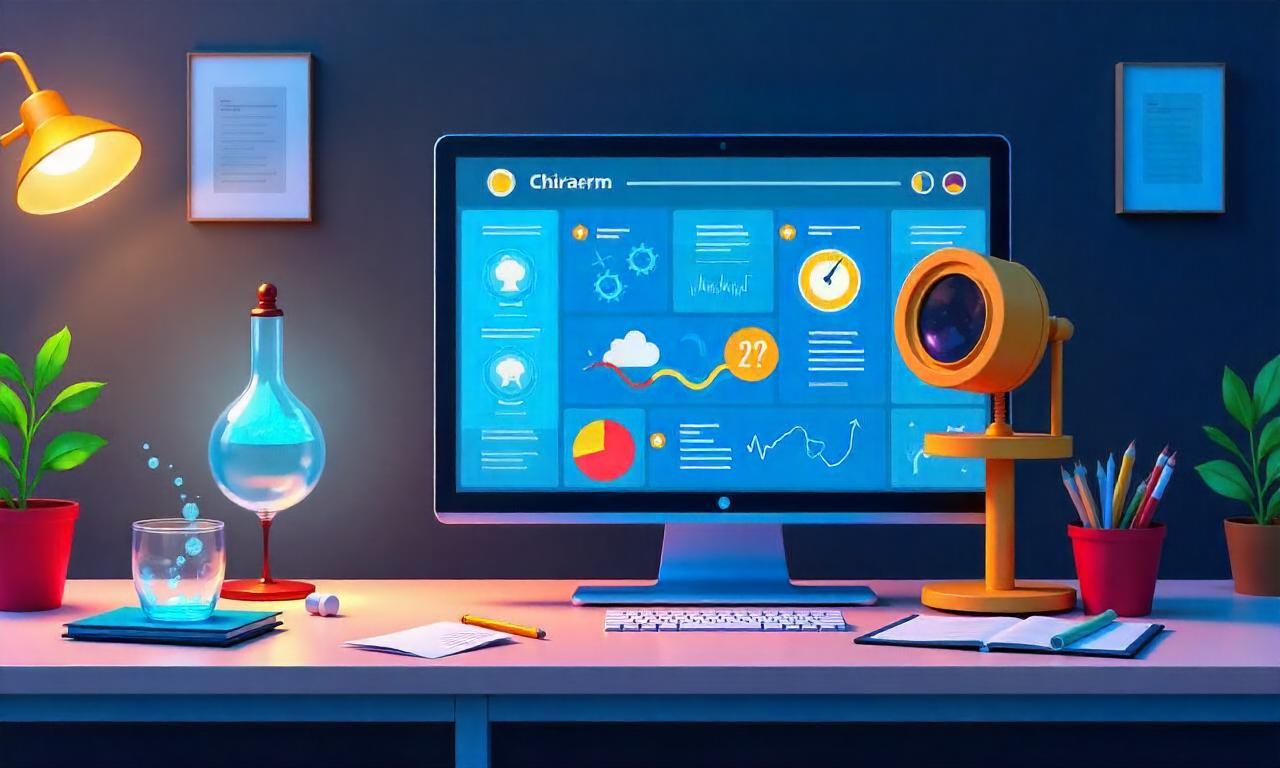Learn how to reduce paper waste in daily life with easy tips like going digital, reusing paper, and choosing eco-friendly alternatives for a sustainable lifestyle.
Did you know that every sheet of paper you discard has a lasting impact on our planet? From deforestation to energy consumption, the consequences of paper waste are far-reaching. Yet, small changes in our habits can make a big difference.
We often overlook the importance of minimizing paper usage. However, it’s a vital step toward protecting our environment. By adopting sustainable practices, we can conserve resources and reduce our ecological footprint.
This guide will show you practical ways to cut down on paper waste. Together, we can create a greener future while saving money and preserving natural resources. Let’s take action today for a better tomorrow.
Table of Contents
ToggleIntroduction: The Urgency of Reducing Paper Waste
The environmental cost of paper production is often underestimated. A staggering 42% of the world’s wood harvest is used to create paper products. This means every sheet we use has a direct link to deforestation and resource depletion.
Over 90% of printed documents come from trees, adding to the growing waste problem. From offices to homes, the sheer volume of paper we consume daily is alarming. It’s time to rethink our habits and take meaningful action.
Why Paper Waste Matters to Our Environment
Paper production doesn’t just consume trees; it also requires significant water and energy. The entire lifecycle of a paper product, from creation to disposal, leaves a lasting mark on the planet. By reducing our use, we can lessen this impact.
Every document we print or discard contributes to environmental stress. Small changes, like opting for digital alternatives, can make a big difference. It’s a simple way to protect our world for future generations.
Our Collective Responsibility
Addressing paper waste is a shared duty. Whether at home or work, we all have a role to play. Taking steps like recycling, reusing, and minimizing printouts can lead to significant improvements.
Understanding the lifecycle of paper products helps us make informed choices. By embracing sustainable practices, we can create a healthier environment. Together, we can pave the way for a greener future.
Understanding the Environmental Impact of Paper Production and Waste Management
The process of creating paper involves more than just cutting down trees; it’s a resource-intensive journey. From water consumption to energy demands, every step leaves a mark on our planet. Understanding this helps us make better choices.
Water, Energy, and Carbon Footprint Considerations
Producing paper requires a lot of natural resources. For example, creating 100,000 sheets can use eight or more trees. It also consumes significant amounts of water and energy.
The carbon footprint of paper production is substantial. Factories emit greenhouse gases during manufacturing. This contributes to climate change and environmental stress.
- Water usage: Paper production requires thousands of gallons per ton.
- Energy demands: Factories rely on electricity and fossil fuels.
- Carbon emissions: The process releases CO2 into the atmosphere.
Deforestation and Ecosystem Disruptions
Cutting down trees for paper has a major impact on ecosystems. Forests are home to countless species. Their destruction disrupts habitats and biodiversity.
Packaging and other paper products add to the problem. A lot of this material ends up in landfills. Recycling and reusing can help reduce this burden.
- Forest loss: Millions of acres are cleared annually for paper.
- Wildlife impact: Animals lose their homes and food sources.
- Waste management: Proper recycling can lessen the environmental toll.
By understanding these issues, we can take steps to minimize our impact. Small changes in our habits can lead to a healthier planet.
How to Reduce Paper Waste in Daily Life: Practical Strategies
Small changes in our daily routines can lead to significant environmental benefits. By adopting simple habits, we can make a big difference in conserving resources and protecting our planet.
Everyday Habits That Make an Impact
Recycling and reusing paper are two of the most effective ways to minimize waste. For instance, using both sides of a sheet extends its life and reduces the need for new paper. This simple step can save resources and optimize space in our homes and offices.
Mindful printing is another key strategy. Before hitting the print button, ask yourself if a digital copy would suffice. This not only cuts down on paper usage but also reduces energy consumption associated with printing.
Business Practices for Sustainability
Businesses can play a major role in reducing paper waste. By transitioning to digital documents, companies can save space and resources. For example, storing files electronically eliminates the need for physical storage and reduces clutter.
Encouraging employees to recycle and reuse paper is another effective approach. Providing convenient recycling stations in workspaces makes it easier for everyone to participate in sustainable practices.
| Traditional Practices | Sustainable Alternatives |
|---|---|
| Printing single-sided documents | Printing double-sided or using digital copies |
| Discarding used paper | Recycling or reusing paper for notes |
| Storing files in physical cabinets | Using cloud storage for digital files |
Embracing these strategies not only helps the environment but also leads to cost savings. By evaluating our daily routines, we can identify opportunities to incorporate paper-saving practices immediately. Together, we can create a more sustainable future.
Embracing Digital Solutions for a Paperless Future
The digital age offers endless opportunities to minimize our reliance on physical resources. By adopting modern tools, we can streamline processes and reduce the amount of paper we use. This shift not only benefits the environment but also enhances efficiency in our daily lives.

Utilizing Digital Invoices and E-Paperwork
Digital invoices and e-paperwork are game-changers for both individuals and businesses. They eliminate the need for physical storage and reduce clutter. With just a few clicks, we can access and manage documents from anywhere, making life simpler and more organized.
Switching to digital paperwork also cuts down on printing costs. It’s a win-win for the environment and our wallets. By making this change today, we can significantly reduce our paper footprint.
Transitioning to Online Meetings and E-Signatures
Online meetings and e-signatures are essential tools for a paperless workplace. They save time and resources while promoting collaboration. Instead of printing agendas or contracts, we can share and sign documents digitally.
E-signatures are legally binding and secure, making them a reliable alternative to traditional methods. By embracing these tools, we can look forward to a future with less waste and more efficiency.
| Traditional Practices | Digital Alternatives |
|---|---|
| Printing invoices and paperwork | Using digital invoices and e-paperwork |
| Physical meetings with printed materials | Hosting online meetings with digital documents |
| Signing contracts with pen and paper | Using e-signatures for secure and quick approvals |
These digital solutions not only reduce paper use but also improve productivity. By integrating them into our routines, we can create a more sustainable and efficient way of working.
Effective Office Practices to Minimize Paper Usage
Offices are one of the biggest contributors to paper consumption, but small changes can lead to big results. The average office worker uses about 45 sheets daily, adding up to significant waste over time. By adopting sustainable practices, we can make a measurable impact on reducing paper waste.
Mindful Printing and Document Management
Printing mindfully is a simple yet effective way to cut down on paper usage. Before printing, always proofread documents to avoid reprints. Opt for double-sided printing to maximize each sheet’s use. This not only saves paper but also reduces energy consumption.
Digital document management is another key strategy. Storing files electronically eliminates the need for physical storage. Cloud-based systems make it easy to access and share files without printing. This approach saves time and reduces clutter in the workspace.
Creating Convenient Recycling Stations in Workspaces
Setting up centralized recycling stations encourages proper disposal of paper products. Place bins in high-traffic areas like copy rooms and break rooms. Clear labeling ensures everyone knows where to recycle, making it a seamless part of daily routines.
Hot desking and digital note-taking are additional ways to minimize paper accumulation. Instead of using physical notebooks, employees can take notes on tablets or laptops. These practices not only conserve resources but also promote a more organized workspace.
- Print double-sided to extend the life of each sheet.
- Use digital storage to eliminate the need for physical files.
- Set up recycling stations to encourage proper disposal.
- Adopt hot desking and digital note-taking to reduce clutter.
By reconsidering every paper product and taking extra steps to recycle, offices can significantly reduce their environmental footprint. These practices conserve time and energy while fostering a culture of sustainability. Together, we can create workspaces that are both efficient and eco-friendly.
Reusing and Recycling: Creative Ways to Maximize Paper Efficiency
Every piece of paper has the potential for multiple uses if we think creatively. By reusing and recycling, we can extend the life of this valuable resource and reduce its environmental impact. Here are some practical tips to help you get started.

Writing on Both Sides and Repurposing Materials
One of the simplest ways to maximize paper efficiency is by writing on both sides. This small change can cut your paper use in half. It’s an easy habit to adopt and works well for notes, drafts, and even printing.
Repurposing paper is another great tip. Old sheets can be turned into crafting material, packaging, or even scrap paper for lists. This not only reduces waste but also gives paper a second life before it reaches the landfill.
- Use both sides of a sheet to double its lifespan.
- Turn old paper into creative projects like bookmarks or gift tags.
- Repurpose paper for packaging or as padding for fragile items.
By rethinking the purpose of each sheet, we can significantly reduce our reliance on new materials. This approach not only conserves resources but also minimizes the amount of waste we produce every day.
Alternatives to Paper Products
In addition to reusing paper, consider alternatives like cloth bags or digital tools. Cloth is a durable and eco-friendly option for tasks like wrapping gifts or carrying items. It’s a simple swap that can make a big difference over time.
Digital tools also offer a paperless solution for tasks like note-taking and document storage. By embracing these alternatives, we can further reduce our environmental footprint and create a more sustainable future.
Every small step counts. By adopting these creative practices, we can make a positive impact on our planet while conserving valuable resources. Let’s work together to maximize paper efficiency and reduce waste in our daily lives.
Conclusion
Taking small steps today can lead to a greener tomorrow. By adopting the strategies discussed, we can significantly cut down on paper usage and its environmental impact. Whether it’s writing on both sides of a sheet or embracing digital solutions, every effort counts.
From mindful printing to setting up recycling stations, these practices offer a practical way reduce waste. Businesses and individuals alike can benefit from these solutions, creating a more sustainable future. Together, we can make a lasting difference.
Let’s take collective responsibility and implement these changes in our daily lives. Share these insights with others and encourage them to join the movement. Remember, even the smallest actions can lead to big results.
Ready to make a green change? Explore more eco-friendly tips at EcoWarriorNation.com and reduce your environmental impact!
FAQ
Why is cutting down on paper usage important for the environment?
Producing paper requires a lot of water, energy, and trees. By minimizing usage, we help conserve resources, reduce deforestation, and lower carbon emissions, which benefits ecosystems and our planet.
What are some easy habits to adopt for reducing paper at home?
Start by using cloth napkins, reusable shopping bags, and digital notes. Opt for e-bills and online subscriptions instead of printed versions. These small changes can make a big difference over time.
How can businesses contribute to minimizing paper waste?
Companies can switch to digital invoices, e-signatures, and online meetings. Implementing double-sided printing and setting up recycling stations in offices also helps cut down on unnecessary usage.
Are there creative ways to reuse paper before recycling it?
Absolutely! Write on both sides of sheets, turn old documents into scratch paper, or use them for crafts. Repurposing materials extends their life and reduces the need for new products.
What role does recycling play in managing paper waste?
Recycling transforms used materials into new products, reducing the demand for fresh resources. It also keeps paper out of landfills, where it would otherwise take up space and release harmful gases.
How can we encourage others to join the effort in reducing paper waste?
Share tips, lead by example, and highlight the environmental benefits. Educating friends, family, and coworkers about simple changes can inspire collective action toward a more sustainable future.













